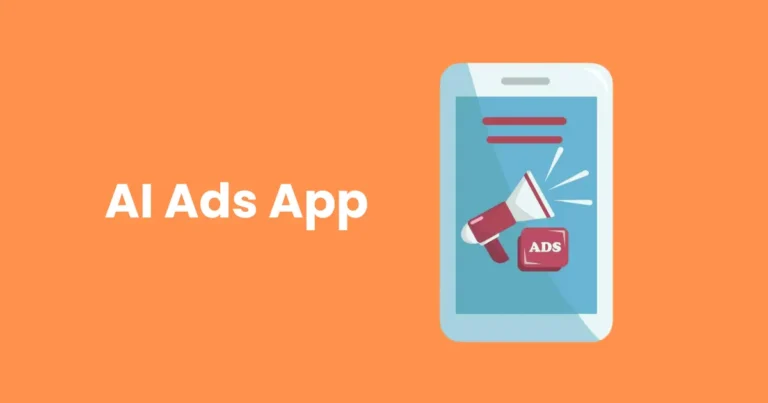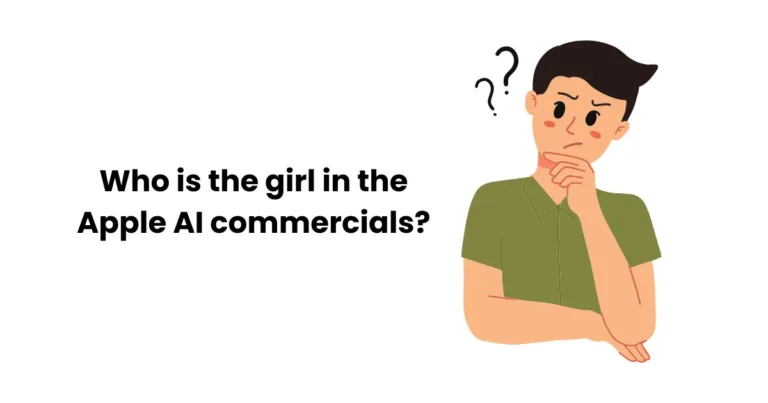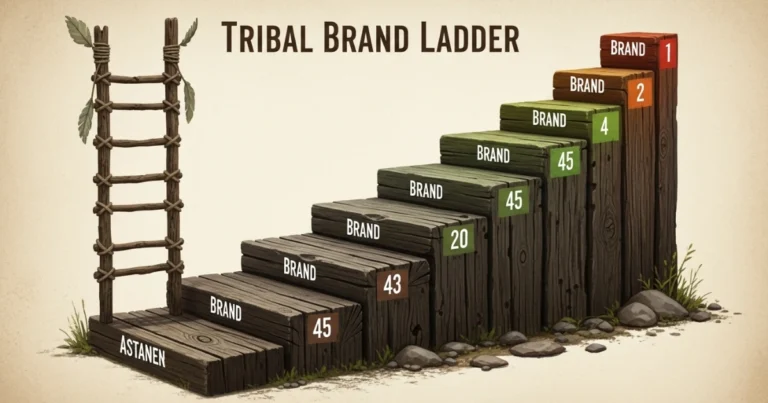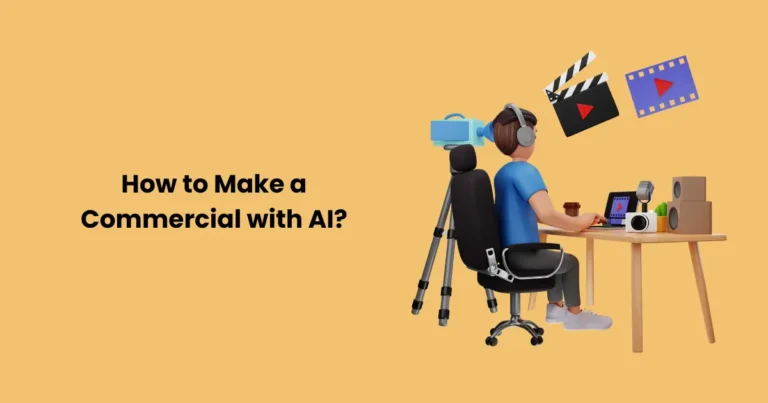Bumper Ads | How Do Bumper Ads Work?
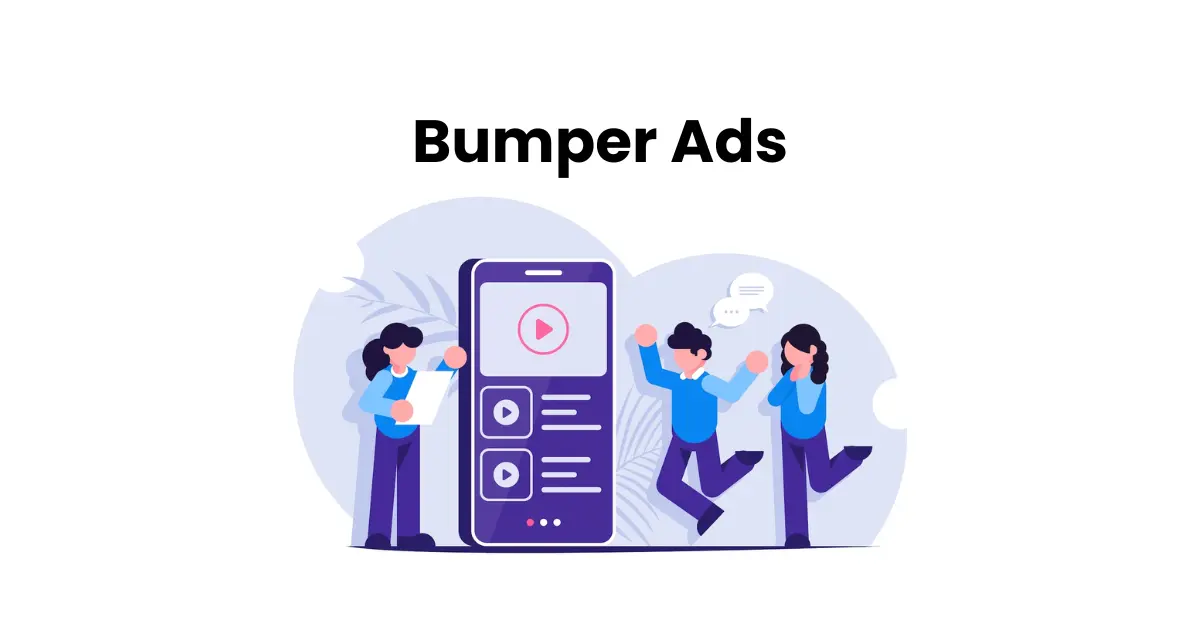
Contents
In the realm of digital marketing, bumper ads have become an innovative and effective way for brands to reach their audience in a concise yet impactful manner. These six-second, non-skippable video ads offer a unique opportunity to convey powerful messages within a short time frame. With users’ attention spans decreasing and the rise of mobile-first content consumption, bumper ads are increasingly seen as a must-have tool for advertisers looking to make a memorable impact. Whether it’s raising brand awareness or promoting specific campaigns, bumper ads play a vital role in today’s fast-paced advertising landscape.
What Are Bumper Ads?
Bumper ads are a specific type of short-form video advertisement typically lasting six seconds. Unlike other digital ads, these are non-skippable, ensuring that the viewer watches the entire message. Bumper ads are designed to capture attention quickly, delivering a focused and impactful message in a brief span. Their concise nature forces brands to distill their message to the essentials, often making them highly effective in creating a lasting impression.
Bumper ads are typically used on platforms like YouTube and social media, where short-form content is the norm. Due to their brevity and non-intrusive format, they are often used for brand awareness campaigns, product teasers, or announcements. The goal of a bumper ad is not to provide a full story but to spark curiosity, evoke emotions, or reinforce a brand’s identity in a way that stays with the viewer even after the ad ends.
Benefits of Bumper Ads
Bumper ads offer several key advantages for businesses looking to engage their audience with short-form content. Below are some of the main benefits that make bumper ads a valuable asset in any marketing strategy.

1. Increased Brand Recall
One of the primary advantages of bumper ads is their ability to enhance brand recall. Since these ads are short, they force marketers to focus on a singular, compelling message. This creates a memorable experience for the viewer, making it more likely that they will remember the brand or product being promoted. The concise nature of bumper ads helps ensure that the core message is absorbed, especially when combined with eye-catching visuals or strong call-to-action (CTA) elements.
2. Cost-Effective Marketing
Compared to longer video ads or other advertising formats, bumper ads are generally more affordable. Their shorter duration means they require less production time and fewer resources, making them a budget-friendly option for brands of all sizes. This cost-effectiveness allows businesses to create multiple variations of bumper ads or run campaigns more frequently, leading to greater exposure over time. Additionally, many platforms that support bumper ads, such as YouTube, offer competitive pricing based on performance metrics, which can lead to better ROI for advertisers.
3. Ideal for Mobile Users
In today’s digital landscape, a large portion of users consume content on mobile devices. Bumper ads are optimized for this mobile-first world, as they cater to the fast-paced, on-the-go nature of mobile browsing. Since the majority of mobile users are scrolling through content quickly, short and non-intrusive bumper ads offer the perfect solution for grabbing their attention without disrupting their experience. This makes them a great option for reaching a mobile audience with minimal disruption.
4. Increased Engagement and Reach
Bumper ads can increase engagement and reach by allowing brands to expand their presence in multiple ad slots. Their short nature means that they can be shown alongside other video content or used as part of a broader ad campaign, such as a series of sequential ads. This repeated exposure across various touchpoints increases the chances of viewers noticing the brand, leading to higher engagement rates. As users are not given the option to skip, bumper ads can also ensure that your message is delivered effectively.
5. Enhanced Storytelling Potential
Despite their brevity, bumper ads can be highly creative and impactful. Marketers can leverage visual storytelling, humor, or emotional appeal to create an ad that resonates with viewers. By focusing on a single message or theme, bumper ads force brands to think strategically and craft clear, concise narratives. Whether it’s showcasing a product feature, announcing a new campaign, or evoking strong emotions, bumper ads give brands the opportunity to tell a compelling story within seconds.
In summary, the benefits of bumper ads make them a powerful tool for businesses aiming to engage their audience quickly, affordably, and effectively. With increased brand recall, cost-effectiveness, mobile optimization, and expanded reach, bumper ads are a must-consider option for marketers in today’s fast-paced advertising environment.
How Do Bumper Ads Work?
Bumper ads operate on a simple yet effective concept: they deliver a short, non-skippable message within a six-second window. These ads are designed to maximize impact in a brief time, ensuring that the message reaches viewers before their attention wanes. Here’s a step-by-step breakdown of how bumper ads work:

1. Platform Integration
Bumper ads are primarily used on digital platforms like YouTube, Facebook, and other social media networks, which support short-form video content. These platforms allow advertisers to create and run bumper ads in various placements, such as before a video plays (pre-roll), during (mid-roll), or after the video (post-roll). The non-skippable nature of bumper ads ensures that the viewer is exposed to the full message, increasing the likelihood of brand exposure.
2. Short and Focused Messaging
Due to the limited six-second duration, bumper ads focus on delivering a single, clear message. This could be anything from promoting a new product, raising brand awareness, or delivering a quick offer. The key is to keep the message simple and direct. As viewers only have a few seconds to engage with the content, it’s essential that the ad does not overwhelm them with excessive information. Instead, it aims to spark interest or create a memorable impression.
3. Non-Skippable Format
Unlike many other video ads, bumper ads cannot be skipped by viewers. This ensures that the advertiser has the full six seconds of the viewer’s attention, making it more likely that the message will be delivered. While some viewers may find longer ads intrusive, the brevity of bumper ads works in their favor, providing a non-intrusive experience while still guaranteeing ad delivery. The non-skippable format is particularly effective on mobile devices, where users tend to scroll quickly through content.
4. Strategic Use in Campaigns
Bumper ads are often used as part of a larger video advertising campaign, complementing longer ads or other ad formats. For example, a brand may use bumper ads to introduce a product or teaser and follow up with longer, more detailed videos to elaborate on the offering. The goal is to create a sequence of ads that progressively build upon one another, keeping the viewer engaged across multiple interactions. By incorporating bumper ads in this way, brands can effectively reinforce their message without losing viewer interest.
5. Retargeting and Frequency
Bumper ads also work well in retargeting strategies. After users interact with a brand’s longer-form content, bumper ads can be used to re-engage them and reinforce the key message. Additionally, the frequent display of bumper ads to the same viewers can help increase brand recall and familiarity. By appearing in multiple ad slots, bumper ads can maximize reach and ensure that the brand remains top of mind.
In essence, bumper ads work by delivering a concise, focused message in a short, non-skippable format. Their integration into digital campaigns, ability to retain attention, and strategic use for retargeting and frequency make them a powerful tool for brands aiming to make an impact in a short amount of time.
Best Practices for Creating Bumper Ads
Creating an effective bumper ad requires more than just condensing your message into six seconds. To make the most out of this brief format, advertisers need to be strategic in how they design and deliver their content. Below are some best practices to ensure your bumper ads resonate with viewers and achieve your marketing objectives.

1. Focus on a Single Message
Since bumper ads are extremely short, it’s crucial to focus on one clear message. Trying to communicate too many ideas in such a short time frame can confuse viewers and dilute the impact of the ad. Whether you’re introducing a new product, promoting a brand value, or creating a call to action, stick to one primary point. This focused approach ensures that your message is both memorable and effective.
2. Use High-Quality Visuals
Even though bumper ads are brief, their visual appeal plays a significant role in engaging viewers. Strong visuals can capture attention quickly and make your message more compelling. Use bold, eye-catching images, clear typography, and strong color contrasts that stand out even on mobile devices. Remember, your visuals should complement the message and enhance the overall narrative of the ad. In some cases, motion graphics or animations can be particularly effective in keeping the viewer’s attention throughout the six seconds.
3. Start with a Hook
To make the most of the limited time you have, start your bumper ad with an immediate hook that grabs the viewer’s attention within the first few moments. This could be an intriguing visual, a surprising fact, or a compelling question. The goal is to pique curiosity and make the viewer want to watch the rest of the ad. If your hook is strong enough, viewers will be more likely to absorb the message, even if they only have a few seconds to engage with the content.
4. Add a Strong Call-to-Action (CTA)
A bumper ad is an ideal opportunity to include a clear and strong call-to-action (CTA). Whether you want the viewer to visit your website, watch a full-length ad, or follow your social media page, a CTA is essential for guiding them towards the next step. Make sure your CTA is straightforward and visible, and keep it simple since you have limited time to communicate the desired action. Phrases like “Learn more,” “Shop now,” or “Sign up today” are simple yet effective ways to encourage engagement.
5. Optimize for Mobile Viewing
Since a significant portion of bumper ads are viewed on mobile devices, it’s crucial to optimize your content for mobile-first viewing. Ensure that your visuals are scalable and readable on small screens, and avoid using too much text. Consider the orientation of your ad (vertical or horizontal) based on the platform and how the ad will be displayed. Additionally, ensure that the audio is clear, as many viewers may be watching without sound. Subtitles or captions can be useful in conveying the message without relying solely on audio.
By following these best practices, you can create bumper ads that are not only effective but also leave a lasting impression on your audience. Focusing on a single message, using high-quality visuals, and making the content mobile-optimized will enhance engagement. Additionally, including a strong CTA and testing your ads will help maximize their impact. Whether used in standalone campaigns or as part of a broader marketing strategy, well-crafted bumper ads can drive brand awareness and audience engagement in a short, impactful format.
Examples of Successful Bumper Ads
Several brands have harnessed the power of bumper ads to create memorable, effective campaigns that have resonated with audiences. These examples showcase how different brands used the six-second format creatively and efficiently to achieve their marketing goals.
Coca-Cola’s Share a Coke campaign utilized bumper ads to drive engagement and brand recall during the summer months. In the ad, viewers saw a Coke bottle with a personalized name on it, which directly tied into the campaign’s message. The simple visual, combined with the message of sharing a Coke with friends, resonated with audiences and boosted both brand awareness and engagement. Despite the ad’s brevity, it effectively communicated the heart of the campaign by focusing on the idea of personal connection.
Key Takeaways:
- Focused on a clear and relatable message.
- Used strong visuals (personalized Coke bottles) that conveyed the campaign’s core idea.
- Evoked emotions related to connection and sharing.
2. Volvo: “The Epic Split”
Volvo’s Epic Split ad, which featured actor Jean-Claude Van Damme performing a split between two Volvo trucks, became a viral sensation. Although the full-length version of the ad ran for longer, Volvo cleverly used a bumper ad format to tease the full video, showing just a few seconds of the split itself. The bumper ad grabbed the viewer’s attention and left them curious about the rest of the ad, encouraging them to watch the full version on YouTube. The combination of action and intrigue made the bumper ad highly effective in generating buzz.
Key Takeaways:
- Used teaser content to create intrigue and drive traffic to longer-form ads.
- Leveraged an iconic celebrity to create a memorable visual.
- Generated viral buzz with a combination of short-form and long-form video content.
3. Nike: “Dream Crazy”
Nike’s Dream Crazy campaign, which featured prominent athletes such as Colin Kaepernick, was also used in a bumper ad format. The bumper ad focused on an inspiring moment of the campaign, with a simple, impactful message about dreaming big and pushing the limits. The ad’s success lay in its ability to convey a motivational message in just six seconds, while maintaining the emotional depth of the larger campaign. The bumper ad’s short length made it shareable and perfect for social media platforms.
Key Takeaways:
- Communicated an emotionally powerful message in a concise format.
- Used strong, impactful visuals that aligned with the brand’s values of empowerment.
- Worked well on social media, where users share short, inspirational content.
4. Google: “Year in Search”
Google’s Year in Search bumper ad highlights key moments from the year based on popular search trends. In the ad, Google used a montage of emotional, inspiring, and uplifting moments to encapsulate the year’s biggest events. The bumper ad format allowed Google to focus on creating a visually compelling recap, highlighting the moments that mattered most to people. The ad effectively conveyed the spirit of the brand in a format that was easily digestible and shareable across platforms.
Key Takeaways:
- Focused on visual storytelling by compiling major moments into a short video.
- Used emotional resonance to connect with viewers.
- Delivered the brand’s message in a positive, uplifting way.
5. Apple: “Shot on iPhone”
Apple’s Shot on iPhone campaign, which featured stunning photos and videos taken by iPhone users, worked seamlessly in bumper ad format. The brand used the bumper ad to highlight the impressive quality of the iPhone’s camera, showing beautiful, high-definition photos within the short six-second window. The visuals were so powerful that no additional messaging was needed. Viewers were immediately drawn into the beauty of the content, reinforcing Apple’s image as a brand focused on innovation and quality.
Key Takeaways:
- Focused on the product’s main feature (camera quality) in a visually appealing way.
- Allowed the product to speak for itself with minimal text or narration.
- Showcased user-generated content, increasing authenticity and relatability.
6. Old Spice: “The Man Your Man Could Smell Like”
Old Spice’s famous “The Man Your Man Could Smell Like” campaign leveraged bumper ads to reinforce the brand’s humorous and bold image. In these six-second ads, Old Spice used quick, witty dialogue paired with absurd visuals to grab attention immediately. The ad’s clever writing and fast pacing kept viewers engaged, even within the brief timeframe. The bumper ad format worked perfectly for Old Spice’s quirky style, ensuring that viewers remembered the brand while enjoying the humor.
Key Takeaways:
- Used humor and quick pacing to keep viewers entertained in a short time.
- Reinforced the brand’s identity as bold, fun, and unexpected.
- Integrated a unique and memorable message that stuck with viewers.
These successful bumper ad campaigns showcase the creative possibilities of the format. Whether through emotional appeal, humor, visual storytelling, or intrigue, these brands were able to deliver compelling messages in just six seconds. By focusing on a single message, using strong visuals, and crafting concise yet impactful stories, they were able to leverage the power of bumper ads to capture attention and drive engagement.
Bumper Ads vs. Other Ad Formats
When it comes to digital advertising, various formats offer different advantages depending on the goals and the audience. Bumper ads, being brief six-second videos, have carved out a niche for themselves in the advertising world. However, they are not the only option available. In this section, we will compare bumper ads with other popular ad formats like skippable ads, non-skippable ads, and display ads. This comparison will help marketers understand the unique advantages of bumper ads and when they might be the most effective choice.

1. Bumper Ads vs. Skippable Ads
Skippable ads are ads that appear before, during, or after a video and can be skipped by the viewer after a few seconds (usually five). In comparison, bumper ads are short, non-skippable, six-second videos.
Bumper Ads
- Advantages:
- Guaranteed Viewership: Since bumper ads are non-skippable, they guarantee that the entire ad will be watched, ensuring full exposure to the message.
- Short and Impactful: The brief duration forces advertisers to be creative and concise, often leading to impactful, memorable messages.
- Mobile-Friendly: Bumper ads are ideal for mobile devices, where users are less likely to engage with longer ads.
- Disadvantages:
- Limited Time: The six-second format can be restrictive, limiting the amount of content you can convey.
Skippable Ads
- Advantages:
- Viewer Control: Viewers have the freedom to skip the ad after a few seconds, which can be a more comfortable viewing experience for the audience.
- Longer Content Possibilities: Skippable ads offer more flexibility in terms of message length (often 15-30 seconds or longer).
- Disadvantages:
- Risk of Skipping: Since users can skip the ad, there’s a chance that they may not see the entire message, leading to potential loss of impact.
- Less Control Over Engagement: Although skippable ads can lead to more in-depth storytelling, they also pose a challenge in terms of ensuring full engagement.
2. Bumper Ads vs. Non-Skippable Ads
Non-skippable ads are similar to bumper ads in that they cannot be skipped by the viewer. However, non-skippable ads are generally longer in duration, typically ranging from 15 to 30 seconds.
Bumper Ads
- Advantages:
- Brevity: With only six seconds to work with, bumper ads force advertisers to craft a concise, high-impact message, which often makes for a more powerful ad.
- Mobile and Social Media Optimization: The brief duration is ideal for platforms like YouTube and social media, where users are accustomed to quick, snackable content.
- Disadvantages:
- Limited Storytelling: The six-second time frame doesn’t allow for much room for elaborate storytelling or explanations, so it’s more suited for simple messages or teasers.
Non-Skippable Ads
- Advantages:
- Longer Duration: Non-skippable ads provide more time to tell a story, which can be beneficial for ads that require more context or a more detailed call to action.
- Guaranteed Viewership: Like bumper ads, non-skippable ads also ensure that the viewer will watch the entire ad, increasing exposure.
- Disadvantages:
- Potential Viewer Frustration: While non-skippable ads guarantee full exposure, they can also frustrate viewers who are forced to watch longer content that they may not find relevant.
- Higher Ad Costs: Non-skippable ads often come at a higher price, especially for longer durations.
3. Bumper Ads vs. Display Ads
Display ads are static or dynamic visual ads that typically appear on websites, apps, or social media platforms. They can come in various formats, including banner ads, pop-up ads, and sidebar ads.
Bumper Ads
- Advantages:
- Highly Engaging: Video ads, including bumper ads, tend to be more engaging than static display ads due to their visual and auditory elements.
- Higher Recall: Because of their dynamic nature and short duration, bumper ads often lead to higher recall rates and stronger emotional impact.
- Disadvantages:
- Limited Targeting Options: While bumper ads can be targeted effectively on platforms like YouTube, they are not as customizable or flexible as display ads in terms of location or size.
Display Ads
- Advantages:
- Highly Targeted: Display ads can be placed on specific websites or apps, and targeting can be based on demographic data, user behavior, or browsing history.
- Cost-Effective for Long-Term Campaigns: Display ads, especially static banners, can be more affordable for advertisers looking to run long-term campaigns.
- Disadvantages:
- Less Engagement: Static images or animated banners are less engaging compared to video content, and often, they are more likely to be ignored by users.
- Ad Blindness: Viewers may develop “ad blindness” due to overexposure to display ads, which can decrease the effectiveness of the campaign.
4. Bumper Ads vs. Social Media Ads
Social media ads come in various formats, including photo, video, carousel, and sponsored posts. These ads are specifically designed to fit within the social media ecosystem, and they vary greatly in length and style.
Bumper Ads
- Advantages:
- Short and Shareable: Bumper ads’ six-second format is ideal for social media platforms, where users often prefer quick, snackable content. These ads are more likely to be shared and passed along, increasing virality.
- High Impact in Short Time: Their brevity can make the message more impactful by cutting through the clutter of social media content.
- Disadvantages:
- Lack of Detail: The ultra-short format may not provide enough room to communicate more complex messages, which can be a limitation for certain campaigns.
Social Media Ads
- Advantages:
- Highly Customizable: Social media ads come in various formats and lengths, allowing for greater flexibility. You can tailor your message depending on your target audience and platform.
- Rich Targeting Capabilities: Social media ads allow for precise audience targeting, helping brands reach highly relevant segments based on interests, demographics, and behaviors.
- Disadvantages:
- Competing for Attention: Social media ads often compete with a wide range of content, making it harder to stand out. In contrast, the brevity of bumper ads ensures the ad is seen quickly.
While bumper ads may seem limiting due to their six-second duration, they offer distinct advantages in terms of guaranteeing viewer attention and providing a concise, impactful message. Compared to other ad formats like skippable ads, non-skippable ads, display ads, and social media ads, bumper ads excel in mobile optimization and creating short bursts of high engagement. However, for more detailed messaging or longer storytelling, other ad formats may be more appropriate. Understanding the strengths and weaknesses of each ad type allows advertisers to choose the most effective strategy for their campaign goals.
How to Measure the Success of Bumper Ads
Measuring the success of bumper ads is crucial to understanding whether the campaign is meeting its objectives. Given the short, six-second format, evaluating their effectiveness requires focusing on specific metrics that align with the goals of the campaign. In this section, we will discuss the most common and relevant ways to measure the success of bumper ads and how you can use these insights to optimize your advertising strategies.

1. View-Through Rate (VTR)
View-through rate (VTR) is a key metric for measuring how many viewers watched your bumper ad to completion. Since bumper ads are six seconds long and non-skippable, the goal is to have as many viewers as possible watch the entire ad.
- Why it’s important: A high VTR indicates that the ad successfully captured the viewer’s attention and held it until the end, which is crucial for short-form video content like bumper ads.
- How to measure: Platforms like YouTube provide VTR metrics for video ads. This data will show the percentage of viewers who watched your bumper ad entirely versus those who skipped or left before it ended.
- Optimizing for better results: If your VTR is low, you may need to rethink the messaging or visuals to ensure they are captivating enough to hold attention.
2. Click-Through Rate (CTR)
The click-through rate (CTR) measures how many viewers clicked on the ad to learn more, visit a website, or make a purchase. Although bumper ads are typically designed to raise awareness, you can still track CTR if you include a call to action (CTA) like visiting a website or watching a full-length video.
- Why it’s important: CTR helps you assess how effective your bumper ad is in driving action from viewers. It provides insight into the ad’s ability to spark interest and drive engagement.
- How to measure: If you’re running bumper ads on platforms like YouTube, CTR is easy to track through the platform’s analytics. It will show the number of clicks on any links or CTAs included in the ad.
- Optimizing for better results: A low CTR may indicate that the CTA was unclear, or that the bumper ad did not resonate with the audience enough to prompt action. Experimenting with different CTAs or refining the ad’s message can help improve CTR.
3. Conversion Rate
The conversion rate tracks how many viewers of the bumper ad completed a desired action, such as signing up for a newsletter, making a purchase, or downloading an app. This metric is critical if your goal is to drive specific user actions beyond just awareness.
- Why it’s important: Unlike CTR, which only tracks clicks, conversion rate shows how many of those clicks resulted in a meaningful action, such as a sale or registration.
- How to measure: Conversion rate is typically tracked using analytics tools such as Google Analytics, which can help you monitor users who took action after watching the bumper ad.
- Optimizing for better results: If your conversion rate is low, it may suggest that the ad generated initial interest but did not fully persuade viewers to take further action. This could mean tweaking the ad’s messaging, CTA, or the user journey on your landing page to boost conversions.
4. Brand Awareness and Recall
One of the primary goals of bumper ads is to increase brand awareness by getting your message in front of a large audience. Measuring how well your bumper ad has improved brand awareness involves tracking metrics like brand recall, ad recall, and brand lift.
- Why it’s important: Brand awareness is often the primary goal for bumper ads, especially when they are used as part of a larger marketing campaign. If your ad is memorable and resonates with your target audience, it will improve your brand’s recognition over time.
- How to measure: Surveys and brand lift studies can be conducted to assess how many viewers remember the ad after watching it. Platforms like YouTube and Facebook offer tools for running brand lift surveys that measure ad recall, brand recognition, and more.
- Optimizing for better results: To improve brand awareness, ensure that your bumper ad’s message is clear, visually appealing, and aligns with the brand’s identity. Using consistent branding elements like logos, colors, and slogans will also help reinforce brand recognition.
Engagement metrics such as likes, shares, and comments are important indicators of how viewers are interacting with your bumper ad on social media platforms. High engagement suggests that viewers find the content valuable or entertaining enough to interact with it.
- Why it’s important: Engagement metrics indicate the level of interaction viewers have with the ad beyond just watching it. Shares, in particular, can help amplify the reach of your campaign by encouraging organic distribution.
- How to measure: Most social media platforms provide engagement data that shows how many users liked, commented on, or shared your bumper ad. These metrics can be accessed through the platform’s analytics tools.
- Optimizing for better results: If your engagement metrics are low, consider refining the ad’s content to make it more shareable. This could involve making the ad more entertaining, relevant, or emotionally resonant.
Conclusion
Bumper ads are a powerful tool in the digital marketing landscape, offering brands the ability to convey concise, impactful messages within a short, six-second timeframe. By measuring the success of your bumper ads through key metrics such as view-through rate, click-through rate, conversion rate, brand awareness, and return on ad spend, you can determine how effectively these ads are meeting your goals. These insights provide valuable feedback that can help you refine your campaigns, optimize content, and ultimately enhance your brand’s presence.
To truly harness the power of bumper ads, it is essential to not only focus on their performance but also ensure that they are strategically designed to captivate your audience, reinforce your brand identity, and drive desired actions. By consistently analyzing performance data and applying best practices, you can maximize the impact of your bumper ads and achieve a higher return on investment.

